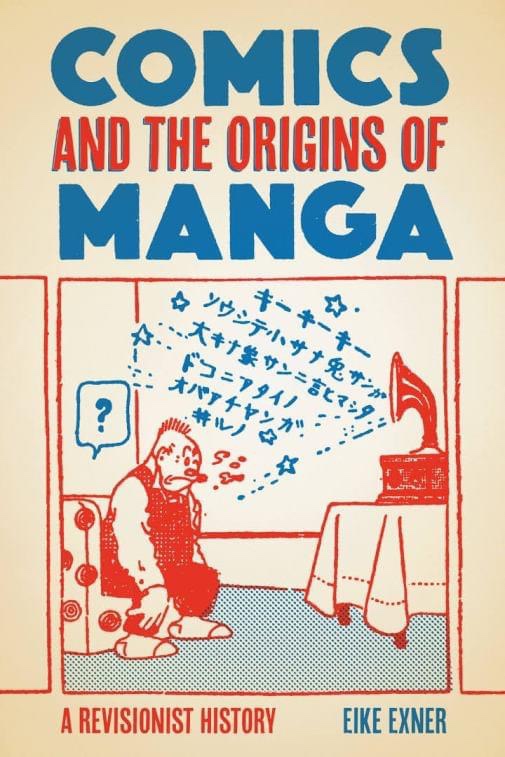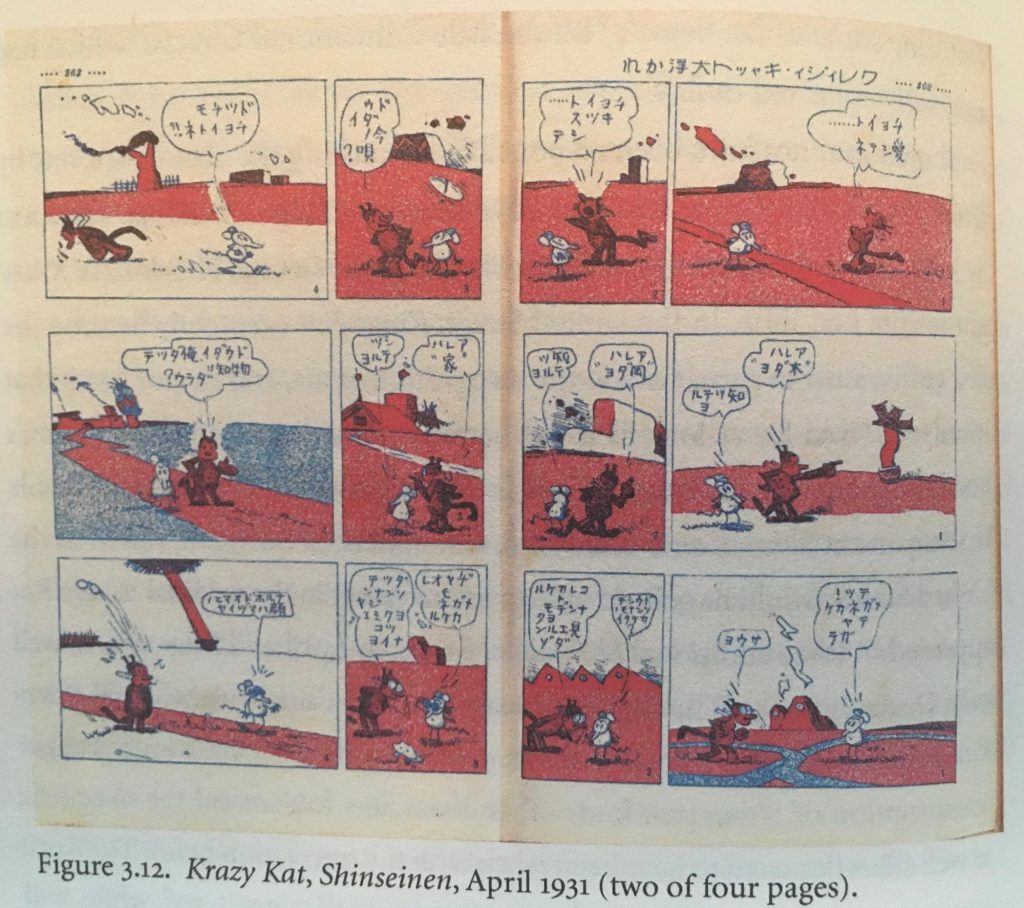
Eike Exner’s game-changing study, Comics and The Origins of Manga is out now from Rutgers University Press. The book charts the vital influence of Japanese translations of American newspaper strips in Japan on the crucial shift to manga creators’ incorporating balloons, sound effects and other audiovisual elements inside their panels and developing the modern manga language we know today, as early as 1908.
As regular downthetubes readers know, Japanese comics, commonly known as manga, are a global sensation. Previewing the book, Rutgers University Press notes critics, scholars, and everyday readers have often viewed this artform through an Orientalist framework, treating manga as the exotic antithesis to American and European comics.
In reality, the history of manga is deeply intertwined with Japan’s avid importation of Western technology and popular culture in the early twentieth century.
Comics and the Origins of Manga reveals how popular US comics characters like Jiggs and Maggie, the Katzenjammer Kids, Felix the Cat, and Popeye achieved immense fame in Japan during the 1920s and 1930s.
Modern comics had earlier developed in the United States in response to new technologies like motion pictures and sound recording, which revolutionised visual storytelling by prompting the invention of devices like speed lines and speech balloons. As audiovisual entertainment like movies and record players spread through Japan, comics followed suit. Their immediate popularity quickly encouraged Japanese editors and cartoonists to enthusiastically embrace the foreign medium and make it their own, paving the way for manga as we know it today.
By challenging the conventional wisdom that manga evolved from centuries of prior Japanese art and explaining why manga and other comics around the world share the same origin story, Comics and the Origins of Manga offers a new understanding of this increasingly influential artform.
Comics archivist Paul Gravett notes that among his examples is this second publication, in April 1931 in the literary magazine Shinseinen, of George Herriman‘s “Krazy Kat”.
This issue ran six daily strips in red and blue, three per spread, with their panels flipped to right-to-left reading.

“I’m not clear how much of the playful language of Herriman’s original shine through in the Japanese,” Paul ponders.
Can anyone reading read this tell us?
• More details of Exner’s essential book and discounts on ordering it at eikeexner.com/books
With thanks to Paul Gravett
The founder of downthetubes, which he established in 1998. John works as a comics and magazine editor, writer, and on promotional work for the Lakes International Comic Art Festival. He is currently editor of Star Trek Explorer, published by Titan – his third tour of duty on the title originally titled Star Trek Magazine.
Working in British comics publishing since the 1980s, his credits include editor of titles such as Doctor Who Magazine, Babylon 5 Magazine, and more. He also edited the comics anthology STRIP Magazine and edited several audio comics for ROK Comics. He has also edited several comic collections, including volumes of “Charley’s War” and “Dan Dare”.
He’s the writer of “Pilgrim: Secrets and Lies” for B7 Comics; “Crucible”, a creator-owned project with 2000AD artist Smuzz; and “Death Duty” and “Skow Dogs” with Dave Hailwood.
Categories: Books, Comics, Comics Studies, Creating Comics, downthetubes News, US Comics
 Latest Journey Planet ‘zine dives deep into The American War in Vietnam
Latest Journey Planet ‘zine dives deep into The American War in Vietnam  Call For Chapters: Battle Lines Drawn: War Comics since 1914
Call For Chapters: Battle Lines Drawn: War Comics since 1914